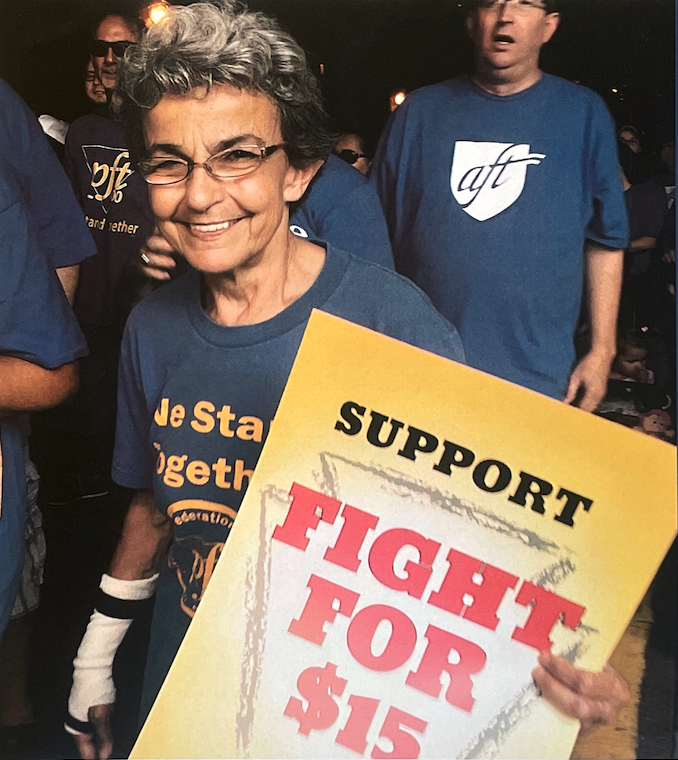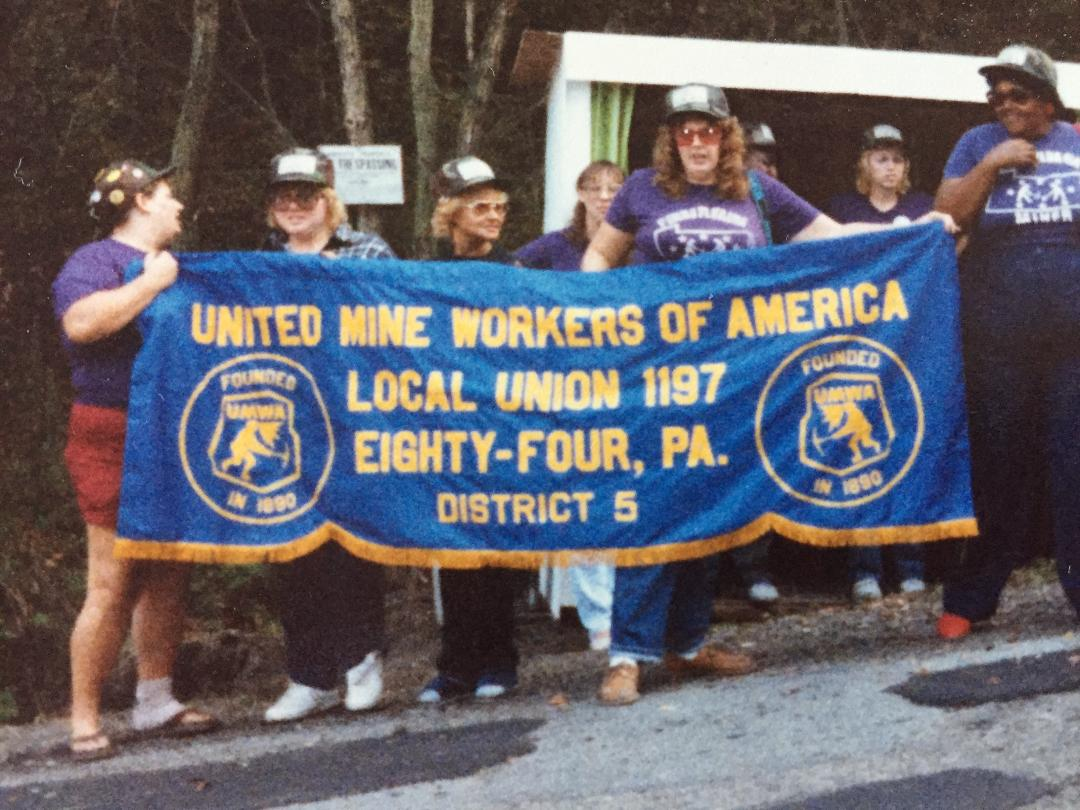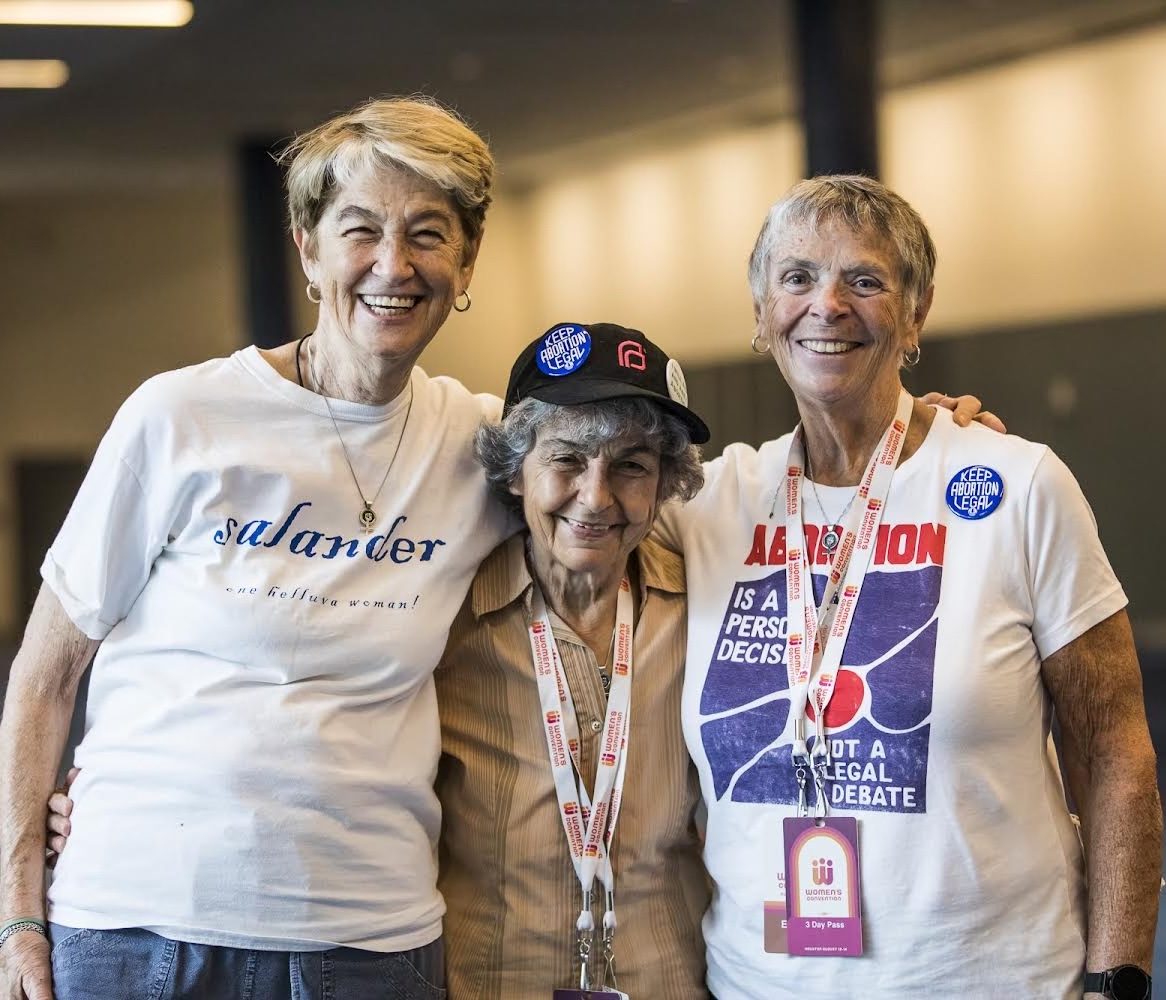Dawson (seated, center, back row) at the March 14, 1964 picket of the Cadillac agency on Van Ness Avenue in San Francisco, California.
Photo: Bancroft Collection: BANC PIC 1959.010–NEG, Part 3, Box 206, [03-14-64.01:05]

Kipp Dawson (1945- ) is an activist and retired coal miner and middle-school English teacher who has built coalitions for over 60 years on the front lines of the Civil Rights Movement, Vietnam anti-war movement, women’s movement, gay liberation movement, labor movement, and education justice movement. Dawson’s astonishing career – and her own identities as a lesbian, Jewish, working-class woman from a multi-racial family – demonstrate the ways in which marginalized people have engaged in collective action, often across multiple social movements and generations.
Dawson participated in major sit-ins that desegregated employment practices in San Francisco; co-led the Free Speech Movement; organized some of the largest anti-Vietnam war demonstrations of the era; helped plan the enormous Women’s Strike for Equality in New York City and one of the first Christopher Street Liberation Day celebrations following Stonewall; worked as a fundraiser for abortion rights leading to Roe v. Wade; and ran as the Socialist Workers Party candidate for Senate from New York. She was arrested six times for protesting and spent a month in prison; was harassed by the FBI from childhood and eventually helped expose their COINTELPRO operations; organized workers underground as a coal miner for 13 years; and worked as a public school teacher for 22 years.


The movements that Dawson helped to lead have faced nearly constant losses and devastating setbacks, including government oppression, intra-movement bigotry, and violent resistance. Victories were sometimes few and far between, yet Dawson and her colleagues persisted and drew strength from each other, buoyed by a sense of possibility for the future. They strategically built love, joy, and hope into their work, using tools such as music, community building, and caring labor. Listen to Dawson discuss how “the struggle is the victory” and explain her spiral theory of history that has allowed her to continue to fight for social change.
